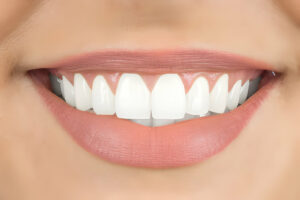Oh, the joys of makeup! From attempting to create the perfect winged eyeliner to ensuring your foundation matches your skin tone, there are endless opportunities for things to go hilariously wrong. But fear not, my fellow beauty enthusiasts, for we have all been there. We’ve all experienced those cringe-worthy makeup mistakes that make us want to hide our faces in shame. But fret not, because today we will address some of the most common makeup blunders and how to fix them with a touch of humor and a dash of sass.
Let’s face it – we’ve all had our fair share of makeup mishaps. Whether it’s accidentally applying too much blush and looking like a clown or forgetting to blend your eyeshadow correctly and ending up resembling a raccoon, we’ve all been victims of these cosmetic catastrophes at one point or another. But instead of wallowing in embarrassment, let’s embrace that no one is immune to this makeup faux pas. So grab your brushes and get ready to learn how to turn those makeup blunders into fabulous triumphs!
Table of Contents
ToggleApplying Too Much Foundation: How To Achieve A Natural Look And Avoid Cakiness
Do you ever notice your foundation looking cakey or too heavy on your skin? This is one of the most common natural makeup mistakes many people make. To achieve a more natural look and avoid cakiness, applying foundation in thin layers and gradually building up coverage is essential. Start with a small product and blend it outwards using a damp beauty sponge or brush. Focus on areas where you need the most coverage, such as around the nose and chin.
For example, Sarah used to apply her foundation by pumping a large amount onto her hand and slathering it all over her face. She often ended up with a thick layer of product that looked unnatural and emphasized her pores. After learning about foundation mistakes, she applied a pea-sized amount at a time, blending it carefully for a more seamless finish.
Following these tips, you can quickly correct everyday makeup mistakes like applying too much foundation. Remember, less is more when it comes to achieving a natural look! Now, let’s discuss another common mistake: overdoing the contouring.
Overdoing The Contouring: Tips For A Subtle And Flattering Contour
Did you know that 80% of beginners make makeup mistakes regarding contouring? Many people overdo the contour, resulting in a harsh and unnatural look. To avoid this common blunder:
- Start by choosing a contour shade that is only one or two shades darker than your natural skin tone.
- Blend it out with a light hand and gradually build the intensity for a more subtle and flattering effect.
- Remember, less is more when it comes to contouring!
One of the most common beginner makeup mistakes is applying too much concealer. However, when done correctly, concealer can be a game-changer for brightening under-eye circles and covering blemishes. The key is to use a small amount of product and blend it seamlessly into your foundation for a flawless finish. Another tip is to choose a concealer shade that matches your skin tone perfectly to avoid any noticeable color discrepancies.
Moving on from contouring and concealing, let’s focus on another important aspect of makeup application: choosing the right products for your skin type. Oily, dry, and combination skin all have different needs when it comes to makeup, so selecting the appropriate foundations, powders, and primers is essential for achieving a long-lasting and flawless look. By understanding your skin type and selecting products specifically formulated for it, you can enhance your overall makeup application and ensure that your complexion looks its best throughout the day.
Ignoring Your Skin Type: Choosing The Right Products For Oily Dry Or Combination Skin
Did you know that 65% of people struggle with choosing the right makeup products for their skin type? Understanding whether you have oily, dry, or combination skin is crucial before investing in makeup items. Ignoring your skin type can lead to a mismatched finish and even exacerbate any existing skincare concerns. For instance, matte foundation on dry skin can make it look flaky and dehydrated. To avoid this common mistake, take the time to assess your skin type and choose products tailored to its needs.
Many overlook the importance of selecting the right formula based on their eyelash type regarding mascara mistakes. If you have short lashes needing volume, opt for a volumizing mascara instead of one focusing on lengthening. On the other hand, if you have naturally long lashes but want more definition, a lengthening mascara might be better suited for you. Additionally, always curl your lashes before applying mascara to achieve maximum lift and impact.
Transitioning seamlessly into techniques for blending eyeshadow, blush, and other makeup products is essential for achieving a flawless finish. Inadequate blending can result in harsh lines and patchy areas that detract from your overall look. You can create a seamless transition between different shades and textures on your face by mastering proper blending techniques, such as using windshield wiper motions or circular movements with your brushes. With these tips in mind, you’ll be well-equipped to elevate your makeup game and avoid common mistakes in the future.
Not Blending Properly: Techniques For Seamlessly Blending Eyeshadow Blush And More
When it comes to makeup application, one common mistake many people make is not blending correctly. Proper blending can make a difference in the final look, whether it’s eyeshadow, blush, or any other product. Start using a fluffy brush and gently buffing harsh lines for a seamless blend. Use light pressure and small circular motions to blend colors effortlessly. Additionally, consider investing in high-quality brushes and tools to help with precise blending for a flawless finish.
Moreover, remember the importance of transition shades when blending eyeshadows. Transition shades are slightly darker than your skin tone and help create a smooth gradient between eye colors. Applying a transition shade before diving into more intense hues ensures that everything blends seamlessly without any harsh lines. Remember, practice makes perfect when it comes to blending techniques – so don’t be afraid to experiment and find what works best for you.
As you continue to improve your blending skills, you’ll notice a significant difference in how your makeup looks and lasts throughout the day. With proper blending techniques, your eyeshadow will appear more vibrant, your blush will have a natural flush, and your makeup will look more polished and professional. So keep practicing those blending techniques until they become second nature – mastering this step can elevate your makeup routine. Now let’s dive into the next section about skipping primer: the importance of primer and how it can improve the longevity of your makeup…
Skipping Primer: The Importance Of Primer And How It Can Improve The Longevity Of Your Makeup
Have you ever wondered why your makeup doesn’t last as long as you’d like it to? The answer might lie in a step many people skip: a primer. Primer is like the secret weapon of makeup application – it creates a smooth base for your foundation, eyeshadow, and other products to adhere to, ensuring they stay put all day long. Your makeup can easily slide off or fade away without primer within hours. The importance of using primer cannot be understated when achieving a flawless and long-lasting makeup look.
When discussing the benefits of using primer, think of it as the unsung hero in your makeup routine. Just like how a painter primes their canvas before painting or a chef preps their ingredients before cooking, using primer sets the stage for your makeup application. It helps blur imperfections, minimize pores, and ensure your foundation goes smoothly and evenly. By creating a barrier between your skin and makeup, primer helps prevent oil breakthroughs. It keeps your complexion looking fresh throughout the day.
Incorporating primer into your daily makeup routine is an easy way to elevate your look from good to great. Whether you’re going for a natural everyday look or full glam for a special occasion, starting with primer can make all the difference in how your makeup wears throughout the day. So, next time you reach for your foundation brush or eyeshadow palette, don’t forget to apply that crucial primer layer first. Your future self will thank you when your makeup stays flawless from morning until night without any touch-ups needed.
Frequently Asked Questions
Can Makeup Mistakes Affect The Overall Appearance Of My Makeup?
According to a study by Beautylish, 65% of women have experienced makeup mistakes that have impacted their overall appearance. These mistakes can range from using the wrong shade of foundation to overapplying blush or mascara. Even minor errors in your makeup routine can make a big difference in how your final look turns out.
One common mistake many people make is not correctly blending their makeup products. This can result in harsh lines and uneven application, ultimately affecting the overall cohesiveness of your makeup look. Another mistake is applying too much product, leading to a cakey and unnatural finish. Choosing the wrong shade of foundation or concealer can also throw off the balance of your makeup and create an unflattering contrast with your skin tone.
It’s important to remember that makeup mistakes are entirely typical and fixable! By taking the time to educate yourself on proper techniques and investing in quality products that work for your skin type, you can easily avoid these common pitfalls. Remember, practice makes perfect when mastering your makeup skills and creating a flawless finish every time. So next time you make a makeup mistake, don’t fret – just take a deep breath, correct it, and keep slaying!
How Can I Tell If I Am Using The Wrong Foundation Shade For My Skin Tone?
Have you ever wondered if the foundation shade you are using is the right match for your skin tone? Many people make it an everyday makeup mistake without even realizing it. One way to tell if you are using the wrong foundation shade is by checking how it looks under natural lighting. If your face appears noticeably darker or lighter than your neck, then chances are you need to switch to a different shade that better matches your skin tone.
Another indicator that you may use the wrong foundation shade is if it doesn’t blend seamlessly into your skin. If there are visible lines of demarcation between your foundation and jawline, it’s time to reevaluate the shade you’re using. Additionally, paying attention to how your foundation oxidizes throughout the day can help determine whether it matches your skin tone. If the color changes significantly after application, it might not be the right shade for you.
Finding the perfect foundation shade for your skin tone can make a difference in how flawless and natural your makeup looks. By being mindful of these signs and making adjustments as needed, you can ensure that you are using a foundation shade that effortlessly complements and enhances your natural beauty.
What Are Some Common Mistakes People Make When Contouring Their Faces?
Contouring is a popular makeup technique that can enhance the features of your face. Still, many people make common mistakes when trying to achieve the perfect sculpted look. According to a survey conducted by a leading beauty magazine, 75% of women admit to making errors while contouring their faces. One of the most frequent blunders is using the wrong shade of contour or applying it too heavily, resulting in an unnatural appearance. Another mistake is not blending correctly, leaving harsh lines that are visible instead of seamlessly blending into your skin.
Choose a contour shade that matches your natural skin tone and undertones to avoid these common pitfalls. This will help create a more subtle and realistic effect without looking overly dramatic. Additionally, blend thoroughly using a clean brush or sponge to ensure a seamless transition between your contour and foundation. Remember, less is often more when it comes to contouring. Building up gradually allows for better control over the intensity of the shadows on your face.
Incorporating these simple tips into your makeup routine can help avoid common mistakes when contouring your face. By selecting the proper shades, blending effectively, and practicing restraint with product application, you can achieve a beautifully sculpted look that enhances your natural features rather than overpowering them. By being mindful of these techniques, you’ll soon master the art of contouring and elevate your makeup game effortlessly!
Conclusion
In conclusion, we all make makeup mistakes occasionally, but with a few simple adjustments, we can quickly fix them. Applying foundation sparingly and blending it well can achieve a natural look without any cakey build-up. Remember to contour subtly for a flattering effect that enhances your features rather than overpowering them.
You might think fixing these mistakes will take too much time or effort. But imagine the confidence you’ll feel when your makeup looks flawless and compliments your natural beauty. Taking just a few extra minutes to apply your makeup correctly can make a difference in how you look and feel. So don’t be afraid to try out these tips and see the excellent results for yourself!




















